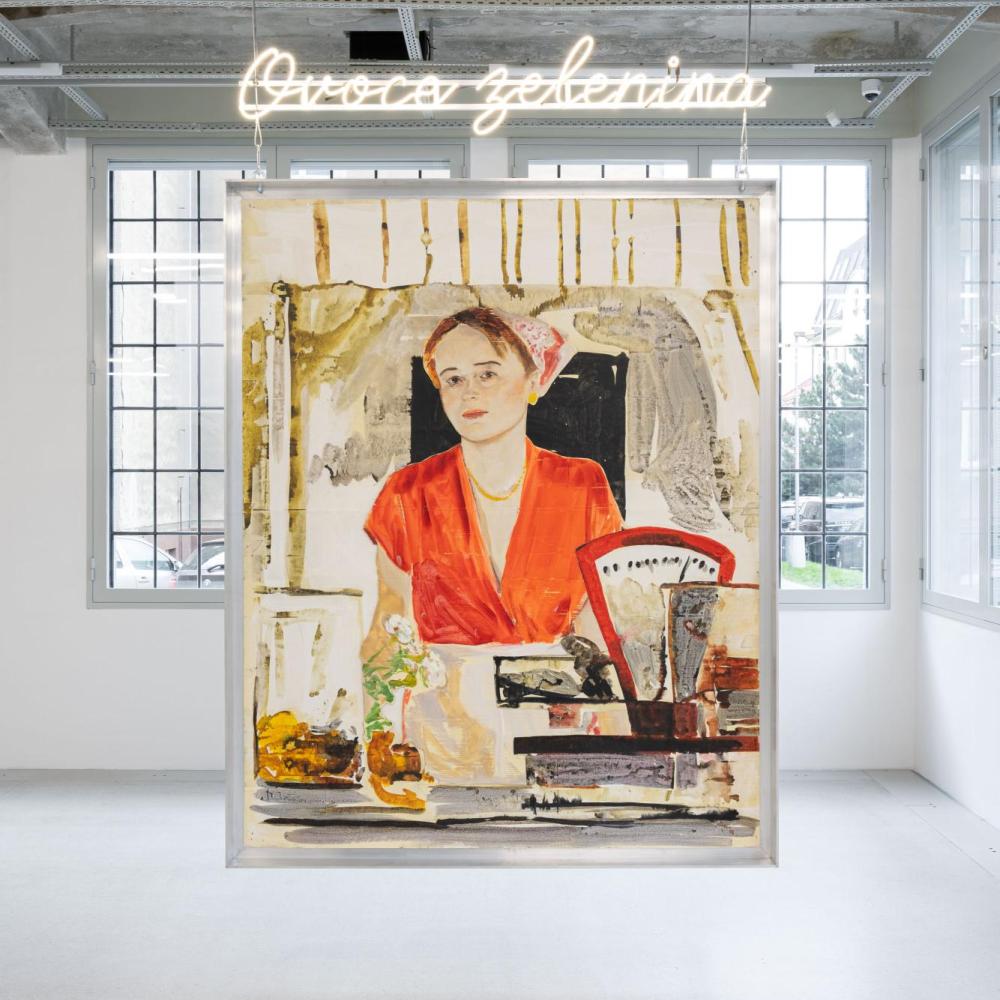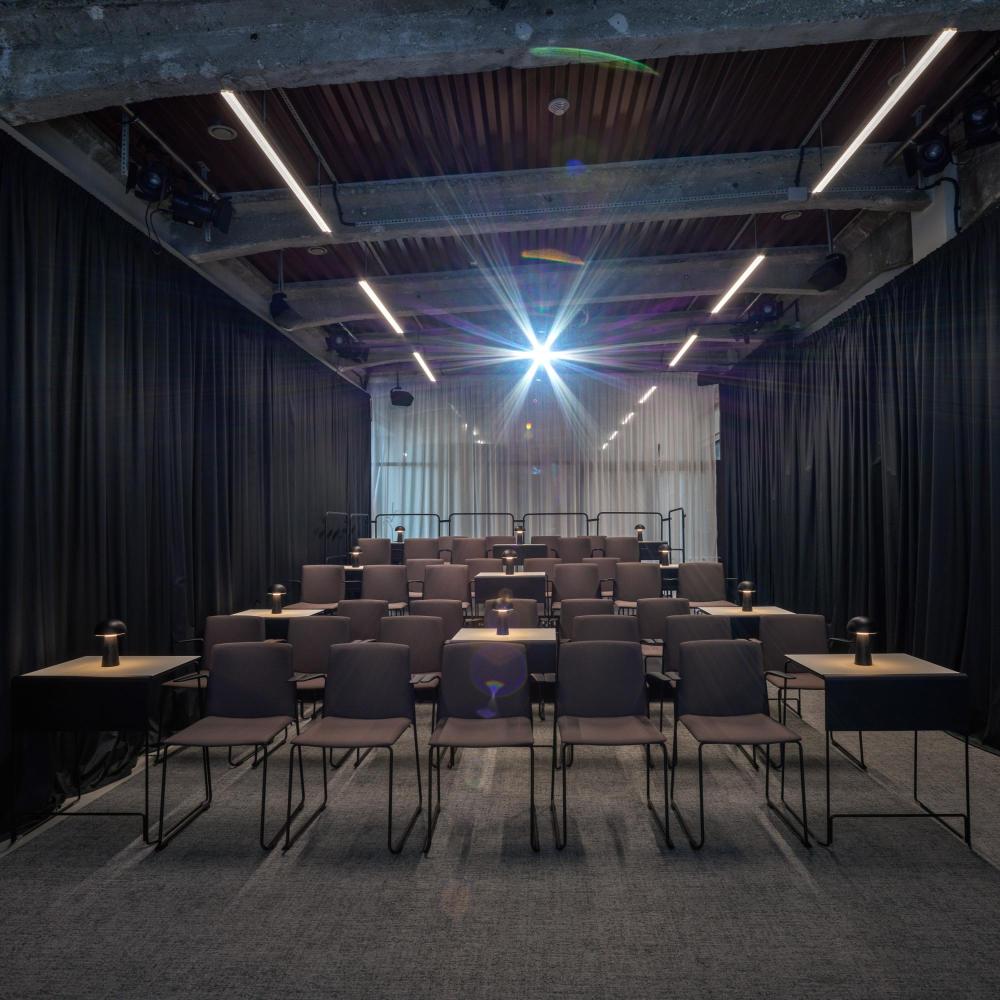
Robert Runták is the owner of one of the largest collections of contemporary and modern art in Central Europe. Before 2019, he bought an old factory building, which he gradually transformed into the Olomouc Cultural Centre. On the lowest floor there is a gallery - a space dedicated to the presentation of contemporary art. In August this year, the Telegraph Gallery will launch New Positions in British Painting, an exhibition highlighting contemporary artistic tendencies in painting by British artists. On this occasion, we asked Robert Runták questions about his extensive art collection and his relationship with contemporary British painting.
New Positions in British Painting will open at the Telegraph Gallery this August. It is therefore imperative that the first question of the interview is: how is contemporary British painting represented in your collection?
As you may know, contemporary European painting forms a numerically small but significant part of my art collection. British painting, then, forms a fairly important listing of works from this segment of the collection and it is probably worth mentioning that the British artist Jonathan Wateridge was the first foreign artist, specifically painter, that I acquired for the collection. That was in 2013. Apart from him, there are other artists represented, mostly painters, because the focus of this part of my collection is on foreign art and a large part of it is focused on painting. British painting is then one of those sections, so as well as Jonathan Wateridge, there are also Jake and Dinos Chapman, Justin Mortimer, who will have a significant role in the forthcoming exhibition, George Shaw, Caroline Walker and others represented.
If you had to pick one contemporary British artist whose personal taste you are closest to, which would it be?
These are very difficult questions, I don't like to answer them. I don't even know if I can answer... But the aforementioned Justin Mortimer and/or Caroline Walker would definitely be among the top favourites. On the other hand, I should mention that there aren't that many British authors in the collection, so it's questionable to what extent this answer is even relevant.
Taking the painter Caroline Walker, for example, of whom you have several works, how has her market price developed? You bought works from her when she was still relatively affordable, and her price has gone up steeply in recent times.
It is true that Caroline is a very successful artist in the current art market. Coincidentally, some of her paintings that she did some 10 years ago have now appeared at several auctions, where the price increase has been almost 20-fold, so Caroline really is one of those - in that respect - successful artists. But I would be reluctant to make it sound like a marked price jump happens naturally for most artists, rather it's the exception. If one picks good works, they will rise in price in some way, but the cases with such a multi-fold increase in price tend to be fewer.
At the Telegraph Gallery, New Positions in British Painting is the third exhibition to reflect figurative tendencies in contemporary European painting - first it was Radu Baies and the Cluj School, then the New Leipzig School as part of German Painting Now, and now contemporary British painting is in the spotlight. What is your relationship to figurative painting?
In the foreign part of the collection in particular, I'm all about figurative painting, which actually has to do with the fact that the collection has several centres. Just for example, the Prussian or Russian school that I mentioned, and also contemporary British painting, so I can say that I like figurative painting, but I certainly wouldn't say that the collection is only about figurative painting, I certainly wouldn't say that. It comes in certain waves where the collector's preferences change, at least in my case. It's not constant by any means.
The figurative painting in your collection is also related to the Men exhibition, which was held last year under the auspices of the Alsova South Bohemia Gallery. It was a selection of works depicting the male body. Could it be said that figurative painting is the cornerstone of your collection?
I certainly wouldn't say that. Clearly, figurative painting plays a large role in my collection... In general, paintings as a medium, whether figurative or abstract, dominate my collection. I like figuration, I've always enjoyed it, I still enjoy it now, but I'm in a period where I'm acquiring more non-figurative things. That doesn't mean that I avoid figuration or that I won't return to it again in the future to a greater extent.
If we stay with the concept of the collection, you have said several times in various interviews that it has a certain direction - Czech art from 1900 to the present and contemporary European painting. In addition, Czech and Slovak Concretism. How does the selection of artworks take place?
I don't know if it can be fully described, but the selection of works is primarily based on financial possibilities, because if the possibilities were different and greater, I would of course choose other works. Actually, the purchase is also based to a large extent on how the collection is focused and what its aim is; that is, to map in some way the development of Czech or Czechoslovak art from 1900 to the present, and then also the development of contemporary European painting after 1990. If there is an opportunity to acquire a work that fits into this broad, but nevertheless broad, concept of the collection, I try to acquire it if my financial possibilities allow me to do so. I always prefer works that represent a movement that is not yet present in the collection or is only weakly represented. It's like putting together a mosaic.
Do you always buy artwork after you've had a chance to see it for yourself?
In the vast majority of cases this is indeed the case - that is, I have to see the work with my own eyes - but it's not a rule that applies absolutely 100%. I've certainly made some works by just seeing them in a photo somewhere on social media, instagram, the internet in general, but that's a smaller part of it, I usually see them in person. However, with some works, typically paintings, it's quite important to see them in person, whereas with other types of art, for example conceptual art, it's not that crucial, so the approach can vary depending on the type of art and the medium.
The curator of the New Positions in British Painting exhibition is Jane Neal, with whom you have worked on several projects. How did your collaboration begin and what can we expect in the future?
It's been 10 years since Jane Neal and I first met in London. We were introduced by our mutual friend Mark Sanders, who knew about my collection from before, so he saw fit to bring Jane Neal and I into contact, as she concentrates a lot of her curatorial and professional work on the regions of Central and Eastern Europe. I'm very grateful that he did so, because Jane has opened the door to many very interesting places for me. As for our collaboration, it has been reflected in the history of the Telegraph with two exhibitions that Jane curated. The first of these was devoted to German painting and the second will shortly feature British painting. This series will then culminate in an exhibition that will showcase Romanian painting, or the Kurdish school, which is a part of the art scene that Jane tends to focus on and also corresponds to some extent with what I acquire for my art collection, so our collaboration makes sense in that respect. I'm certainly looking forward to both exhibitions, both British and Romanian painting.
By Barbora Křížová, Mira Macík / Telegraph Gallery







